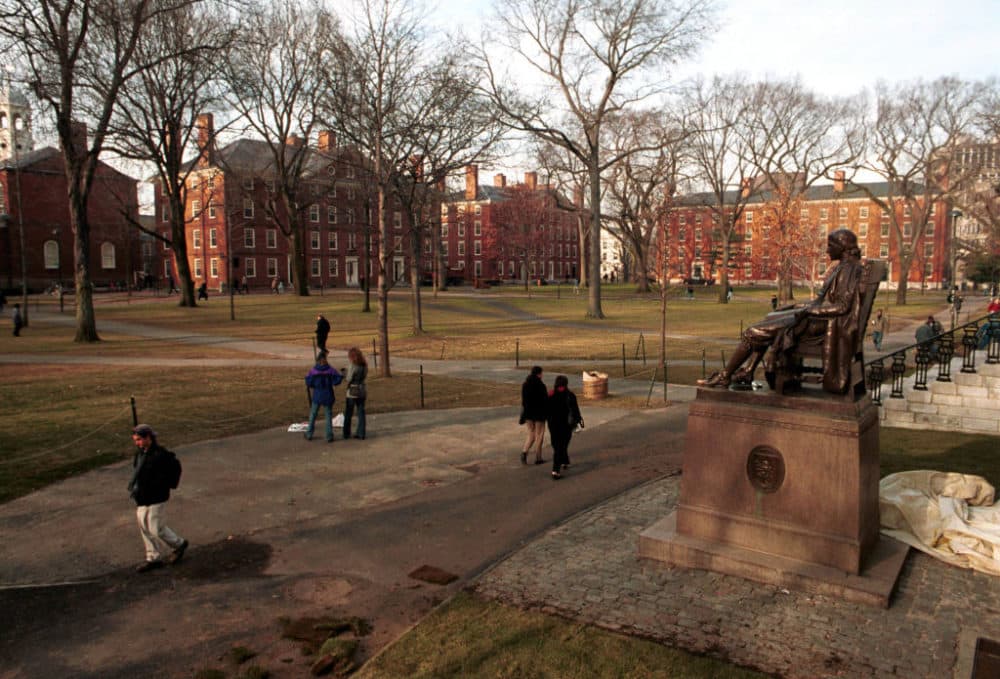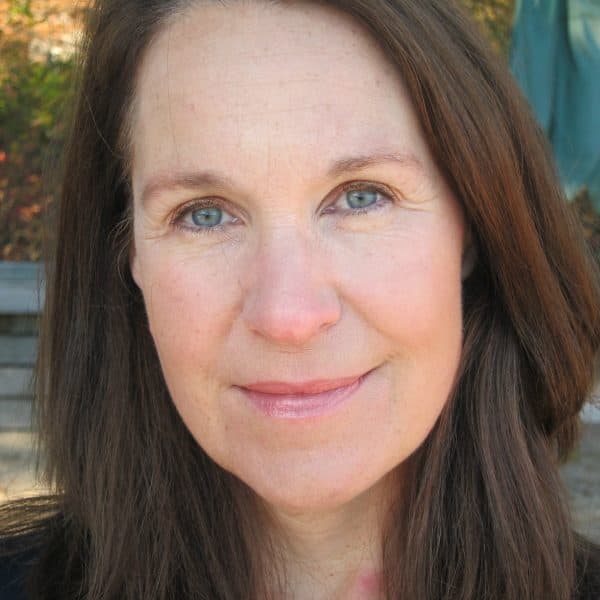Advertisement
Commentary
Why the sexual harassment lawsuit against Harvard is important

As a Ph.D. student, I took a graduate seminar from a star professor in modernist poetry. Anecdotes that he slept with graduate students and bragged about it were hardly restricted to whisper networks. They were part of the department’s common knowledge.
When I went to his office hours to discuss my first seminar paper, he told me he could be very aggressive toward women he found attractive, and that I should understand his comments in that context. Like so many women, I executed the depressingly familiar pas de deux of simultaneously walking out of his office and my desired field of study.
I got out of his way, but I watched a cohort of students — whom he never targeted — rise through the field. Whether they knew it or not, they were beneficiaries of his expertise and his sexual harassment, which created a system of patronage. Supporters did not have to openly condone his behavior to benefit. They could look the other way. They could compare their own behavior to his as “not that bad.” And they could rally to his defense as a brilliant and respected intellectual if anyone raised concern about sexual misconduct.
The explosive lawsuit brought against Harvard draws back the curtain on what decades of these practices look like in academia, as it details specific allegations against anthropology professor John Comaroff and delivers a blistering indictment of “Harvard’s decade-long failure to protect students from sexual abuse and career-ending retaliation.”
Within the context of #MeToo, the Harvard case points a way forward: it clarifies why sexual violence is pervasive in academia and what can be done to change it. The suit links sexual harassment to other abuses of power and exposes the blatant unfairness of Harvard’s process. It has the potential to hold Harvard accountable for knowing better and doing better. By naming an institution as the responsible party, the case also represents a watershed moment in the #MeToo movement. It leverages collective credibility to expose a systemic problem that requires a structural solution to ensure accountability.
The lawsuit is brought by three anthropology Ph.D. students: Margaret G. Czerwienski, Lilia M. Kilburn and Amulya Mandava. The women allege that Comaroff exploited his “power and his perch at Harvard to exploit aspiring scholars.” Specifically, “he kissed and groped students without their consent, made unwelcome sexual advances and threatened to sabotage students’ careers if they complained.” These are serious allegations. Yet, when the students reported him to the university and sought to warn their peers about him, “Harvard watched as he retaliated by foreclosing career paths and ensuring that those students would have ‘trouble getting jobs.’”
Allowing the investigatory process itself to become a tool in Comaroff’s “campaign of professional blacklisting,” Harvard enabled him and turned the students into collateral damage. One example: Harvard obtained Kilburn’s private therapy notes without her consent, shared them with Comaroff, and apparently attached the notes to its final report on the case, so everyone who had the report could read them. Comaroff allegedly used the information — that Kilburn had PTSD as a result of his harassment — to gaslight her, saying she couldn't be trusted.
Concern about “process” is precisely what 38 of Harvard’s bold-faced faculty names said motivated them to sign a letter of support for Comaroff. But the letter, notably, is a warm and personal endorsement of the professor:
“We the undersigned know John Comaroff to be an excellent colleague, advisor and committed university citizen who has for five decades trained and advised hundreds of Ph.D. students of diverse backgrounds, who have subsequently become leaders in universities across the world.”
They now say they were merely voicing concerns about process (and 34 of 38 have retracted their signatures), but the letter is clearly in support of him.
This is important because the lawsuit identifies two tools — sexual harassment and retaliation — that abusers use to maintain their networks of influence and shows how institutions enable them when they do. Naming these tools in the lawsuit unites three individual complaints into a collective demand for accountability at the highest levels. It charges that a decade-long pattern persists through the institutional procedures designed to investigate it and sanction it. It claims Comaroff threatened retaliation and brandished his gatekeeping power, which to me is sure what that letter signed by 38 of his colleagues looks like an example of.
Allowing the investigatory process itself to become a tool in Comaroff’s “campaign of professional blacklisting,” Harvard enabled him and turned the students into collateral damage.
The chronology in this suit is complicated. It intertwines three timelines: Comaroff’s sexual harassment of specific people, the ongoing and thwarted efforts to report his misconduct and his retaliation for potential, suspected and actual reporting.
Czerwienski learned in 2016 about Comaroff’s sexual harassment of a classmate at Harvard, and encouraged her classmate to report to Title IX (her classmate did). Czerwienski tried to inform her professors and protect other students. Mandava also reported Comaroff's harassment of peers to professors and sought to warn students in 2017. Both allege that Comaroff threatened them with career-ending retaliation in 2017, effectively silencing them — a threat which Czerwienski reported to Title IX immediately. Kilburn, as a result of Harvard’s failure to act, was the direct target of Comaroff’s sexual harassment from 2017-2019, as the suit explains. These three students were effectively isolated from each other until 2019 when they managed to connect their experiences. All three had come forward at different times and to different entities to report Comaroff's harassment and retaliation, but were met with inaction.
Their suit anatomizes how the interlocking elements of a celebrity-driven academic culture, an investigative process that stalled the women in their efforts to warn students about Comaroff, and a complacent institution created a culture in which abuse of power and professional development go hand in hand.
Together the women demonstrate the laughably inadequate protections offered to them as silence breakers, and also point a way toward a potential paradigm shift through their collective silence breaking and whistle blowing.
By linking sexual harassment to other abuses of power, exposing the absence of real recourse through an independent process for survivors, and naming an institution as the responsible party, this case represents a watershed in #MeToo movement. It leverages collective credibility to expose a systemic problem that requires a structural solution to ensure accountability.
Sexual harassment allows some to flourish ... as it weeds out others who interrupt the reproduction of privilege and inequality.
The #MeToo movement vividly demonstrates that the problem with sexual violence is not limited to isolated examples. It does not exist apart from other forms of abuse and is deeply rooted in hierarchal cultures, as in the academy. Some transformational examples of #MeToo activism have also involved collective complaints. Think about the gymnasts who spoke out about Larry Nassar, and are demanding accountability from USA Gymnastics and the FBI for its botched investigation. Or the women who held Jeffrey Epstein and Ghislaine Maxwell to account. Or the women who exposed Andrew Cuomo’s sexual harassment. Each one of these spotlights the networks through which sexual abuse is maintained at the highest levels of power.
In the Harvard lawsuit, the women’s interlocking stories of trying to stop a sexual predator — and being thwarted by Harvard’s processes — demonstrate that sexual harassment and retaliation are ready tools to maintain abuse of power as an institutionally protected practice. Sexual harassment allows some to flourish — as gatekeepers, beneficiaries of patronage, and bystanders — as it weeds out others who interrupt the reproduction of privilege and inequality.
Perhaps the Harvard faculty who signed the letter of support harbored fears of #MeToo overreach. Yet five years into the #MeToo movement, witch hunts and unfair accusations are as rare as instances of voter fraud in the 2020 election.
The problem in both cases is with the distortion of truth and the use of that distortion to do harm. The actual problems with Harvard’s process are vividly outlined in the lawsuit. They make it clear that third-party investigations of sexual harassment are important to shifting a culture of silencing. Such investigations can be used to ensure that when faculty are determined to have engaged in sexual harassment and retaliation, proportional disciplinary action follows. This would represent the real recourse survivors and whistle blowers alike deserve.
